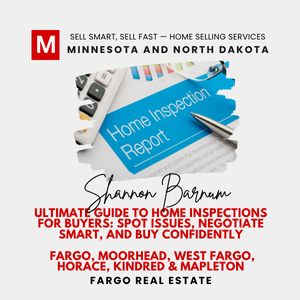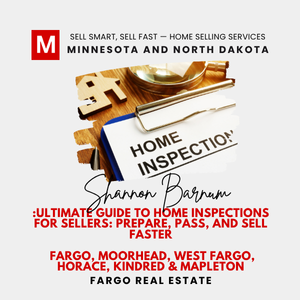AI & Portals: Hidden Home Costs for Buyers & Sellers

AI and big portals shape what buyers see—and what sellers pay. Protect your equity in Fargo, Moorhead, West Fargo, Horace, Kindred & Mapleton.
By Modern Market REALTORS® at FargoHomeSearch.com
Table of Contents (click to toggle)
Summary for busy readers
Artificial intelligence is now embedded in nearly every step of the home journey—pricing, search rankings, ad targeting, lead routing, mortgage pre-approvals, and even which listings you see first. When a few national platforms control the data, the ad marketplace, and the “recommended” agents, power concentrates. That can mean higher lead costs (passed back to consumers), pay-to-play exposure for listings, and subtle AI steering that favors certain buyers, sellers, or service providers. This guide explains where the risks show up, what to watch for whether you’re selling or buying, and how to protect your equity and your time.
The new stack: data, distribution, decision engines
Real estate used to be local. Today, the stack looks like this:
- Data capture: Listing photos, remarks, tours, price changes, time-on-market, showing data, and buyer behavior (clicks, saves, requests) flow to a small set of national portals, ad networks, CRMs, and lenders.
- Distribution: A handful of platforms control how listings are displayed, which homes are promoted, and which buyer inquiries are sold as leads.
- Decision engines (AI): Algorithms score leads, set ad bids, rank listings, suggest price changes, route inquiries to partners, and nudge users toward “house-ready” loan products.
When the same companies (or a small cluster of partners) own data + distribution + decision engines, they don’t need a formal “monopoly” to act like one. Gatekeeping happens through fees, preferred placements, and AI-driven recommendations that most consumers never see—and can’t audit.
What AI is actually doing—today
AI isn’t sci-fi here. It’s practical:
- Pricing assistance: Automated valuation models (AVMs) suggest list-price bands and instant-offer ranges.
- Ranking & visibility: Search results are personalized. Homes that match past behavior (or paid boosts) move up.
- Lead scoring & routing: Your inquiry may be auctioned to multiple agents or lenders; the “best” agent may be whoever paid most for that zip code, not who’s best for your block.
- Ad targeting: Sellers see “sell your house in 7 days” pitches; buyers see “no-money-down” offers—because the system predicts what gets a click, not what’s best for you.
- Risk models: Lenders use non-traditional signals to prioritize “smooth” files, which can create inequities for first-time buyers or self-employed applicants.
None of this is inherently bad. It can create speed and convenience. But convenience without transparency invites steering, price discrimination, and higher downstream costs.
The seller’s side: where power concentrates—at your expense
1) Pay-to-play listing exposure
Not all eyeballs are equal. Some platforms boost placement for listings tied to their partners or paid products.
Risk to you: Your home may compete unfairly against “featured” listings. If you choose a discount route with limited distribution, your days-on-market can rise.
Pro tip: If you’re asking “how to price my home in a slow market 2025” or “best time to sell a house in Moorhead MN,” insist on a written distribution plan: MLS, IDX, local portals, email to buyer agents, retargeting audiences, and open-house strategy. Ask exactly where your listing appears and what’s organic vs. paid.
2) Lead resale and referral fees
Your prospective buyers may arrive via lead marketplaces that resell the same inquiry to multiple agents.
Risk to you: Your listing agent could be busy chasing churned leads instead of courting serious, pre-approved buyers. Also, inflated acquisition costs get baked into fees somewhere.
Pro tip: When interviewing agents, ask: “What percentage of your buyers come from resold portal leads vs. local sphere, relocation networks, and in-market referrals?”
3) “Instant cash offer” funnels
Some “get an offer now” tools use AVMs + investor networks to send a fast cash bid.
Risk to you: Convenience carries a tradeoff—net proceeds may fall due to discounts, service fees, or repair credits.
Pro tip: If you’ve Googled “should I take a cash offer or list on the MLS” or “sell your home as-is in Cass County ND,” demand a side-by-side net sheet: cash-as-is vs. listed retail after realistic repairs and time on market.
4) Hidden admin/processing fees
Some brokerages or third-party “platform services” layer on admin, transaction, or “technology” fees.
Risk to you: Junk fees quietly erode your equity.
Pro tip: If you’re searching “avoid hidden admin fees when selling a house,” ask for a one-page fee disclosure that lists every dollar: commission, admin, MLS input, photography, staging, marketing, and post-closing charges.
5) Algorithmic nudges on price
Recommendation engines may nudge you toward quicker price cuts to hit platform KPIs (freshness, conversion).
Risk to you: Cutting too early can forfeit leverage.
Pro tip: Tie price strategy to local comps + showing feedback + absorption rate, not just a portal’s “suggested” change.
The buyer’s side: how AI can steer you
1) Personalized search = filter bubble
If you click mostly new builds or certain neighborhoods, the AI shows more of that—even when value is better nearby.
Risk to you: You miss “off-pattern” opportunities, like a just-reduced listing across the school boundary.
Pro tip: If you’re asking “how to buy a house in Fargo with low down payment” or “best neighborhoods for first-time buyers in Moorhead MN,” run multiple clean searches (no saved prefs) and work with a local agent who can set MLS-direct alerts that aren’t throttled by portal ranking.
2) Preferred partners everywhere
From mortgage to title, platforms often default to in-house or paying partners.
Risk to you: Great for platform economics, not necessarily your rate, fees, or service.
Pro tip: Get two local lender quotes and one bank/credit-union quote. Ask for a no-points vs. points side-by-side and an APR comparison.
3) “Top agent” labels
Badges may reflect paid zip code spend or referral-fee agreements—not hyper-local expertise.
Risk to you: You could be steered to a generalist unfamiliar with block-by-block pricing.
Pro tip: Interview for micro-market fluency: “What’s the list-to-sale ratio in West Fargo vs. Horace this quarter? Days on market for patio homes vs. twin homes?”
4) Credit-box bias
AI prioritizes smooth files. Self-employed or credit-thin buyers can get deprioritized.
Risk to you: You may feel “invisible” to listing agents if your pre-approval isn’t from a favored partner.
Pro tip: Use a lender that does full underwriting up front. Pair your offer with a responsive local agent who can call the listing agent and present your file credibly.
How consolidation quietly raises your costs
- Lead acquisition costs inflate marketing spend that gets passed through somewhere.
- Referral fees (25–40% in some networks) influence which professionals get your business.
- Data lock-in makes it hard for independent brokers to compete without buying leads from the same platforms.
- AI asymmetry: Big players train models on national data; smaller shops have to rent access via ads or partner programs.
For consumers, that means you pay—either in fees, in weaker negotiation leverage, or in reduced choice you never see.
What to do if you’re selling
A practical checklist you can print:
- Pricing: Use a local CMA + in-person condition review. Treat AVMs as a range, not a number.
- Marketing plan: Get a written, channel-by-channel plan: MLS, IDX, social, email to local agents, open houses, retargeting. Ask which parts are organic vs. paid.
- Photography & media: Require pro photos + floor plan + room measurements. AI-edited images should follow MLS rules—no misleading alterations.
- Net sheet: Request side-by-side cash-as-is vs. list retail estimates with fees, credits, and time assumptions.
- Fee clarity: Demand a single-page disclosure of every fee and who collects it.
- Negotiation strategy: Pre-plan price changes tied to feedback and market signals, not automated prompts.
- SEO readiness: Optimize your remarks for searches like “how to sell my house fast in Fargo ND,” “best time to sell a house in Moorhead MN,” “FSBO vs Realtor in Minnesota,” “how much to fix before listing a house.” Use these phrases naturally.
What to do if you’re buying
- Multiple search channels: MLS-direct alerts + at least one national portal + your agent’s private “coming soon” network to avoid filter bubbles.
- Team selection: Interview for hyper-local comps expertise and offer strategy in this week’s market, not last year’s.
- Financing: Get two to three quotes. Ask about lender credits, rate buydowns, and appraisal gap strategies.
- Offer playbook: Discuss appraisal/inspection terms, seller possession, and ways to stay competitive without overpaying.
- Data sanity check: When a portal says “hot home,” ask your agent to pull the absorption rate and days-on-market trend for that sub-neighborhood and price band.
Ethical risk zone: algorithmic bias & “digital redlining”
Housing is uniquely sensitive. Even unintentional algorithmic effects can produce disparate outcomes. When personalization is extreme, some buyers may never see certain listings; some neighborhoods get under-exposed; some borrowers get steered to higher-fee products. The fix isn’t to reject AI—it’s to demand transparency and keep human judgment in the loop.
Local matters more than ever
The antidote to national gatekeeping is local, accountable expertise. A transparent local brokerage will:
- Publish the full marketing stack for each listing.
- Provide CMA + net sheets with assumptions you can challenge.
- Share agent-to-agent networks and “coming soon” pipelines.
- Pressure-test portal claims with MLS data and boots-on-the-ground knowledge.
- Disclose all fees and referral relationships in plain English.
If you’re in Fargo, Moorhead, West Fargo, or Horace, this is your backyard. Block-by-block comps, HOA nuances, floodplain details, and builder reputations matter more than any national algorithm.
Action plan for Fargo–Moorhead sellers (save this)
- Thinking “how to sell my house fast in Fargo ND without losing money?” Start with condition triage: inexpensive, visible fixes; professional cleaning; light landscaping.
- Wondering “best time to sell a house in Moorhead MN?” Look at 60-day absorption and school-calendar effects—your outcome depends more on the micro-window than the month.
- Debating “FSBO vs Realtor in Minnesota?” Price discovery and negotiation require time; measure your opportunity cost and buyer-agent access before skipping representation.
- Comparing “cash offer vs listing” scenarios? Insist on net sheets that include service fees, repair credits, tax prorations, and rent-back costs.
Fast FAQ (keyword-rich, consumer-first)
Q: How do I sell my house fast in Fargo ND without leaving money on the table?
Focus on pricing in the market, not above it; first-week merchandising (photos, floor plan, launch email to top buyer agents); and a pre-planned offer review strategy.
Q: Should I take a cash offer or list on the MLS?
Run a side-by-side net with real fees and realistic days-on-market. In many cases, retail MLS nets more even after commissions.
Q: What’s the best time to sell a house in Moorhead MN?
When absorption (pending per active) is strongest for your price band and style—often a series of micro-windows tied to school and weather, not just “spring.”
Q: How much do Realtor fees cost in North Dakota?
Fees are negotiable. Ask for a single-page fee breakdown and clarity on what’s included (pro media, staging consult, paid ads, showing support).
Q: Do I need a pre-inspection to sell my house in West Fargo?
Optional, but it can surface repair items early, sharpen pricing, and strengthen buyer confidence.
Q: FSBO vs Realtor in Minnesota—what’s the trade-off?
Savings vs. exposure and negotiation power. If going FSBO, invest in pro media, verify buyer financing early, and be ready for appraisal and title logistics.
Q: What is a fair cash offer for my house in Dilworth MN?
A fair range considers as-is condition, repair scope, and local investor yields. Start with a CMA and an honest punch-list before evaluating offers.
Q: How to price my home in a slow market 2025?
Anchor to recent pendings, not just closed comps; monitor showing-to-offer ratios; schedule data-driven price reviews at set intervals—not automated prompts.
Buyer safeguards in an AI-shaped market
- Compare search views: Portal vs. MLS-direct alerts. If there’s a mismatch, ask why.
- Challenge “hot” labels: Validate with neighborhood-level stats.
- Independent lender quotes: Avoid single-platform lock-in; compare APR, lender credits, and turn-times.
- Representation matters: Your buyer agent should articulate an offer ladder (multiple pathways to win) tailored to your risk tolerance.
- Document everything: Keep fee sheets, rate locks, and estimate assumptions. Transparency is your leverage.
The bottom line
AI will remain part of real estate. But when a small group of platforms control what gets seen, who gets the lead, and which partners you’re nudged toward, consumers must respond with clarity and choice:
- Demand fee transparency.
- Ask for organic vs. paid exposure plans.
- Use multiple search channels.
- Prefer local, accountable expertise over algorithmic defaults.
- Insist on side-by-side net sheets before signing anything.
If you’re preparing to sell or buy in the Fargo–Moorhead area and want a plan built for your block, not a national algorithm, we’re here to help you keep more of your equity and make smarter moves.
Extra:
how to sell my house fast in Fargo ND; best time to sell a house in Moorhead MN; FSBO vs Realtor in Minnesota; how much do Realtor fees cost in North Dakota; sell your home as-is in Cass County ND; how to choose a listing agent in Fargo; what is a fair cash offer for my house in Dilworth MN; how to price my home in a slow market; avoid hidden admin fees when selling a house; should I take a cash offer or list on the MLS; how much to fix before listing a house; do I need a pre-inspection to sell my house in West Fargo; best neighborhoods for first-time buyers in Moorhead MN; how to buy a house in Fargo with low down payment.



